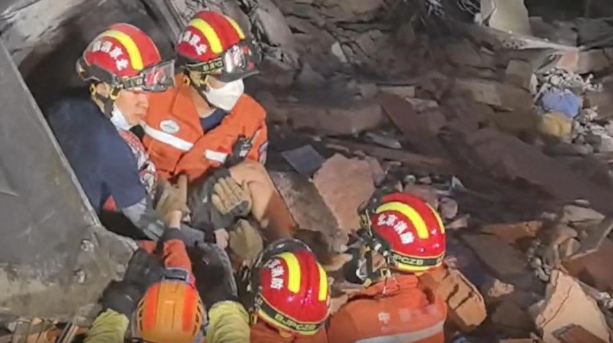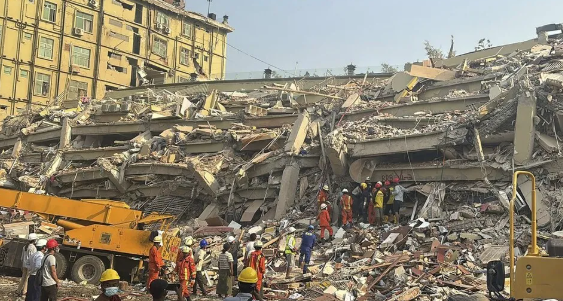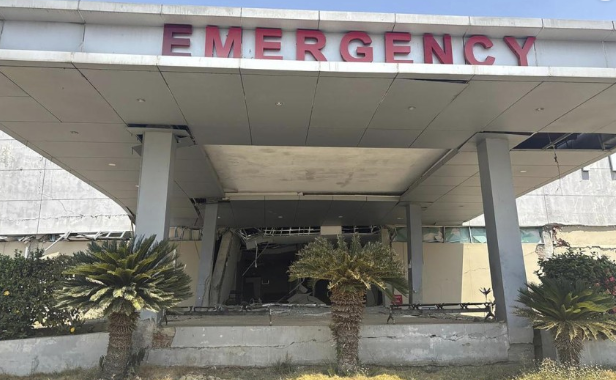
“About half of the 50 students who were teaching in Mandalay are out of touch.”
Director Kim Yoo-sung, who runs a Korean language education institution “Comis” in Myanmar’s second city of Mandalay and Yangon, the largest city, said in a phone call with the Dong-A Ilbo on the 31st.
Kim avoided anger as he was staying in Yangon when the 7.7-magnitude earthquake hit Mandalay on April 28. However, he said, “In Myanmar, there are too many cases where people are saddened by the death of their family members, neighbors, friends and relatives, or lost contact.” “Due to a long civil war and weak infrastructure, rescue efforts and relief supplies are not being delivered smoothly. It is more important to deal with the situation in the future,” he said.

● Myanmar Smells like Dead Body Corruption
According to AFP, Myanmar’s military regime said the death toll exceeded 2056 and the injured exceeded 3,900 as of Thursday. More than 270 people are still missing. Aftershocks also remained feared, with a magnitude-5.1 earthquake hitting the ground in the afternoon.
Local residents and volunteers are removing debris with ropes and shovels in a heat wave with daytime highs of 41 degrees Celsius without proper heavy equipment. The Mandalay Free Press, a local media outlet, reported that “the smell of rotting bodies is vibrating everywhere because the bodies have not been properly recovered.” In Mandalay and nearby Sagaing, most of the bridges and roads leading to and from the area were damaged, and relief supplies have not been delivered properly. Reuters reported that an orthopedic surgery in downtown Mandalay had 500 beds placed on the site outside the hospital, and that patients were scattered on the floor at the hospital where the building collapsed due to the earthquake. Ma Ai, a volunteer at Sagaing, told the Guardian, a British daily newspaper, that patients were in the scorching heat all weekend long because there were no tents to hide the sunlight. In Naypyitaw, the capital of Myanmar, buildings collapsed en masse and many casualties occurred due to the earthquake.
The World Health Organization declared Myanmar’s earthquake a state of emergency with the highest level of 8 million U.S. dollars in emergency funding on June 30. The Myanmar branch of the International Federation of the Red Cross (IFRC) is also providing volunteers, mobile health teams and emergency relief supplies.
However, the Myanmar military’s control of information and communication failure have severely restricted relief activities. The New York Times said, “It is uncertain whether the aid will be delivered to the affected people as there is a possibility that the military will take it even if the aid arrives. Some observers say that the military will not send relief aid to rebel areas that are fighting against them.

● Bangkok Ship Expects to Find Survivors by Using Various Equipment
In Thailand, which has a better economic situation and relatively better infrastructure than Myanmar, the search for survivors is underway at the site of the collapse of buildings caused by the earthquake. “I ran here without hesitation after hearing that I was recruiting volunteers at the site of the disaster,” said Bialafa Chamaong, who met at around 8 a.m. on the 31st at the site of the collapse of the auditor building across from Bangkok’s Chatuchak market.
In the place, which was usually crowded with tourists, a large number of civilian volunteers such as Mr. Bialafa gathered from dawn before dawn. A citizen who led a food truck gave cold coffee to rescue workers who were tired of the heat, and the owners of street vendors handed out freshly boiled rice noodles to the families of missing people who were losing their energy.
The earthquake killed at least 18 people in Bangkok alone, according to Thai authorities. In particular, 11 people died at the construction site. Many of the 78 people who went missing were construction workers from Myanmar who were working there.
Some volunteers translated for families of missing Myanmar people. “The sadness and shock of Myanmar people will be much greater than us,” a volunteer said. “It is our job to comfort them.”
Rescue teams have been struggling for more than 72 hours since the earthquake struck. Even drones equipped with thermal cameras and detection dogs appeared at the site, reminiscent of battlefields.
According to local media such as the Bangkok Post, Bangkok Mayor Chat Chon said in a press conference on the 30th last month, “Some signs of life are being detected at the site of the building collapse. I believe there is still a chance to find survivors.”
A rescue worker also told a reporter, “The rescue work is speeding up with the input of mechanical equipment,” adding, “There must be survivors, so everyone is encouraging each other to cheer up.”
SALLY LEE
US ASIA JOURNAL



